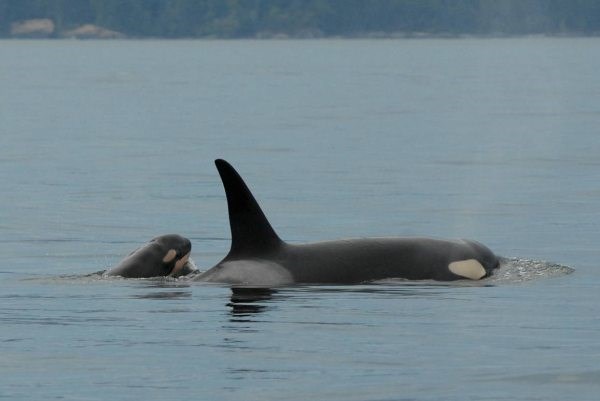The squeaks, whistles and occasional grunts speak volumes to Amalis Riera.
The different dialects of killer whales, transmitted through acoustic monitors at Swiftsure Bank, 35 kilometres off Vancouver Island’s west coast, and Cape Elizabeth, off the coast of Washington State, tell her which whales are in those areas.
“They’re all different calls. The calls are almost like a different language,” said Riera, a researcher at Fisheries and Oceans Pacific Biological Station, specializing in acoustic monitoring of killer whales.
The monitors pick up conversations of southern residents, northern residents, B.C. transients and California transients. Riera’s research has shown that Swiftsure Bank is a killer whale hotspot, where all four populations spend time.
A question Riera wanted her research to answer was whether critical habitat for endangered southern residents should be expanded to include Swiftsure Bank.
“This highlights the importance of Swiftsure Bank and supports the extension of the critical habitat,” said Riera, a speaker at Marine Naturalist Night last week at the Shaw Ocean Discovery Centre in Sidney.
Critical habitat is essential for the recovery of endangered or threatened populations. It is identified by the federal government and then legally protected.
For the southern residents, with 84 members remaining, the critical habitat, identified in 2009, after conservation groups took the federal government to court, takes in Juan de Fuca Strait and much of the Strait of Georgia.
Critical habitat for the threatened northern population includes Johnstone Strait and the southern part of Queen Charlotte Strait.
Boundaries for the threatened transient population have not yet been identified. Jared Towers, a Pacific Biological Station research technician, said at the aquarium meeting that, ideally, critical habitat for transients should extend for three nautical miles from the shore of Vancouver Island.
“We will see what happens,” he said.
There is then the question of how critical habitat should be protected, said Lance Barrett-Lennard, head of Vancouver Aquarium’s cetacean research program.
The protection rules are vague, he said.
The most controversial question is how to ensure an adequate supply of chinook salmon, the main food source for resident killer whales.
“Allocation of salmon for killer whales is a political hot potato,” Barrett-Lennard said. But spot closures or limits on fishing in whale hotspots could protect salmon for whales without an all-out fishing ban, he said.
Sheila Thornton, DFO species-at-risk recovery planner, said that critical habitat boundaries are not written in stone and an extension to Swiftsure Bank could be considered.
“We are conducting ongoing research to make sure we have completely identified the critical habitat,” she said.
Once an area is designated and DFO completes its action plan, protecting the availability or accessibility of prey must be included, she said.
The draft action plan for resident killer whales should be completed later this year, she said.
Plans for the transients should go out for public consultation in 2014, Thornton said.
“It is a long process before you get legally protected critical habitat,” she said.



